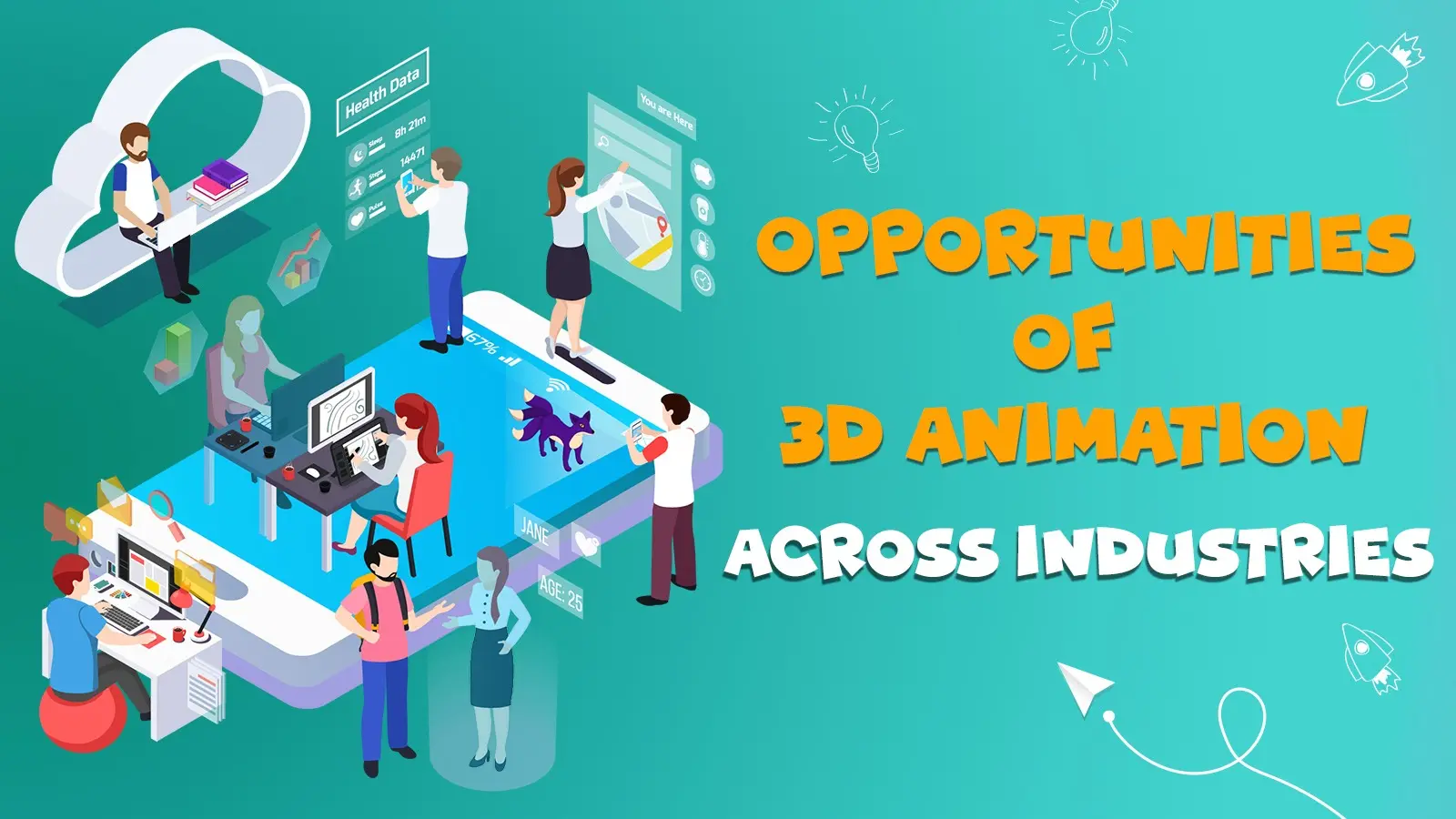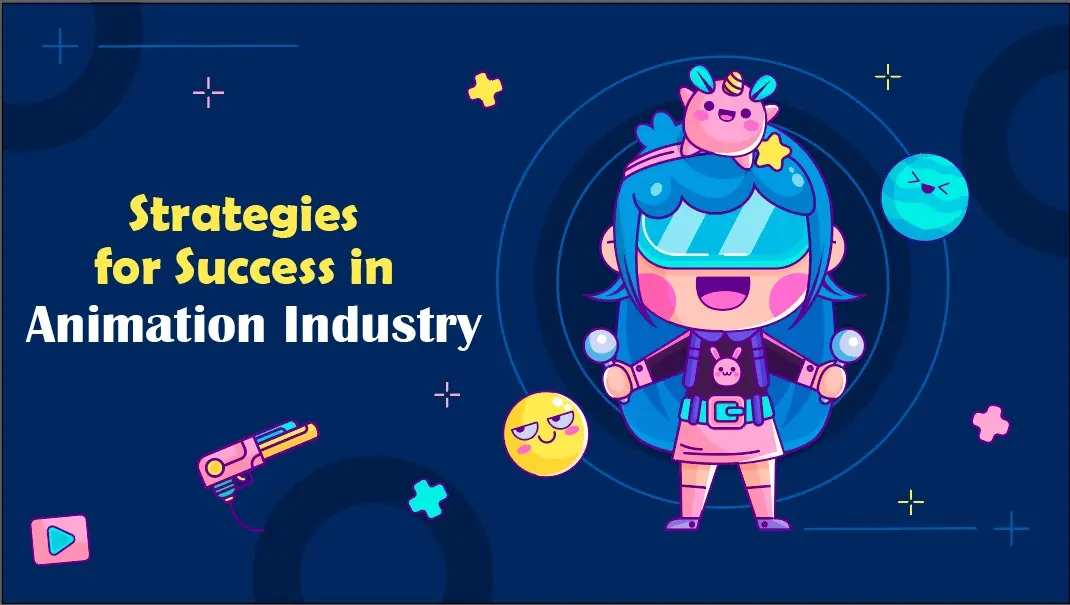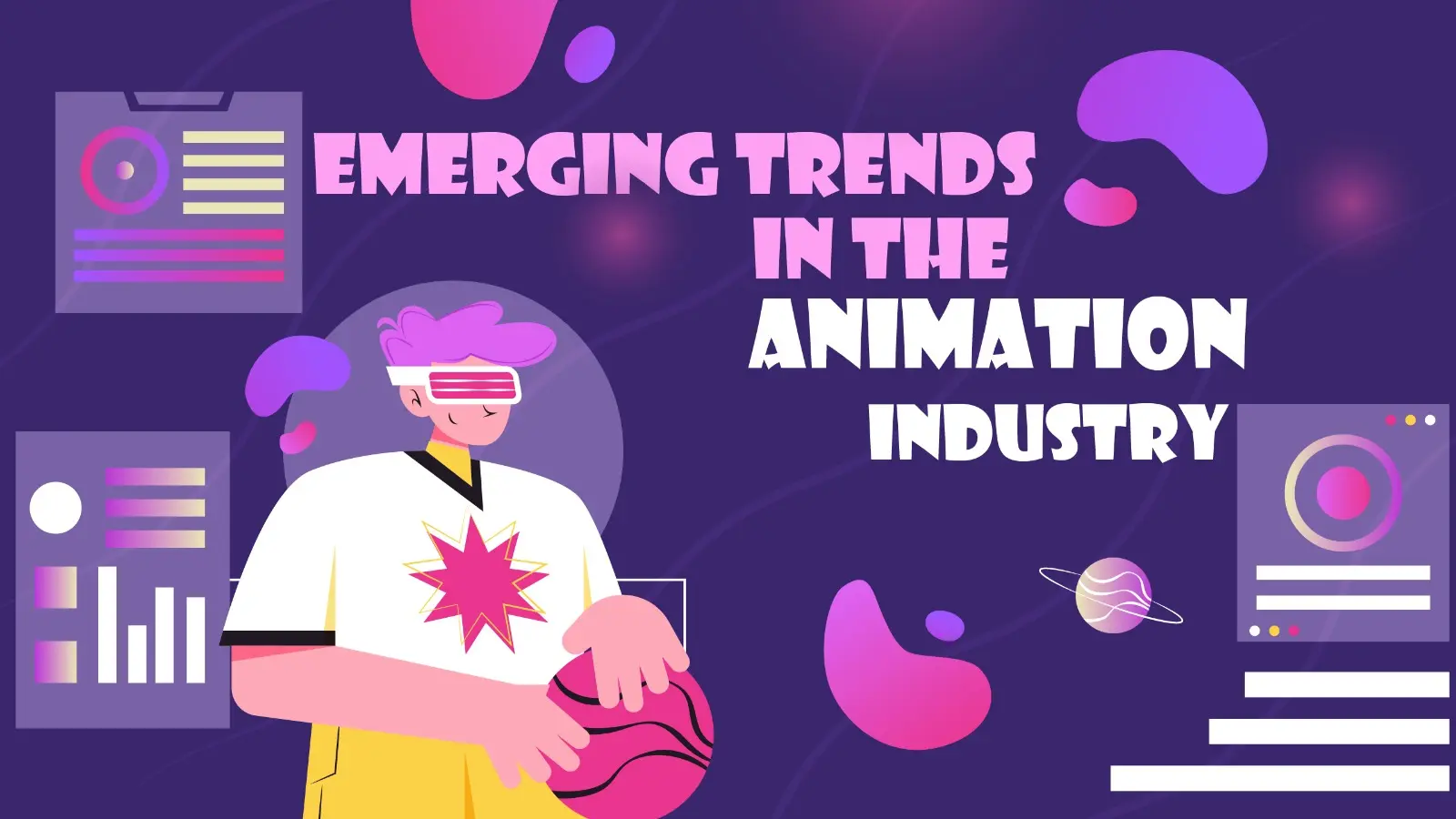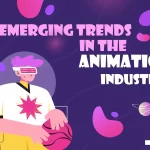The 3D animation industry is witnessing rapid advancements due to technological innovations. With new technologies such as virtual reality (VR), augmented reality (AR), artificial intelligence (AI), machine learning, and real-time rendering, the global animation market is projected to reach $587 billion by 2030. The significant impact of 3D animation can be seen in entertainment, education, healthcare, and the gaming industry.
In this blog post, we will explore the latest trends, strategies, and emerging opportunities in 3D animation.
Emerging Trends in 3D Animation: What’s Shaping the Future

1. AI-Driven Animation
AI automates various tasks such as character movement, facial expressions, and scripting. This reduces costs, saves time, and gives enough scope for creativity, which in turn boosts productivity.
2. Virtual and Augmented Reality
VR Animation: With virtual reality, viewers are transported into a virtual environment and given a chance to have first-hand experience of things.
AR Animation: With augmented reality, you can breathe life into digital products and help users interact with them in a real environment.
3. Real-Time Rendering
Real-time rendering eliminates production delays and displays instant animation results. This technology is particularly useful for films, TV series, gaming, architecture visualisation, and live events.
4. Non-linear Storytelling
3D animation is also becoming prevalent in video games, virtual reality experiences, and films with non-linear narratives. Such stories are growing popular for dynamic and flexible experiences.
5. Sustainable Practices
Animation studios are adopting environment-friendly practices like reducing waste, lowering carbon footprints, and decreasing energy consumption.
6. Cloud Computing
Cloud-based animation solutions allow seamless collaboration on the same project among global teams. This boosts productivity while reducing the need for expensive hardware and software.
7. Cross-platform Animation
Cross-platform animation content is optimised for various platforms and screen sizes, such as mobile devices, laptops, iPads, and more.
8. Hyper Realistic Animation
Due to advancements in technology such as computer graphics software and rendering techniques. animators can create hyper realistic animation that seems lifelike and 100% accurate.
9. Quantum Computing
With quantum computing, 3D animators can finish tasks faster and create ultrarealistic animation. It is a very potent tool for physics, lighting, and texturing.
10. Biometric Animation
Biometric animation focuses on body gestures and facial expressions to convey emotions. This type of animation is used in movies, video games, virtual reality, and medical therapies.
Strategies for Success in the 3D Animation Industry

1. Embrace emerging technologies and cutting-edge solutions to speed up your project workflow and reduce production time and costs.
2. Customize your content and experiment with different animation styles to fit different industry types, such as education, healthcare, architecture, and gaming.
3. Build partnerships and collaborate with various production houses, game developers, and other companies to create original content or outsource projects.
4. Build a strong online presence by leveraging platforms like ArtStation, Behance, and YouTube to showcase your work, engage audiences, and attract clients.
5. Develop original IP and generate long-term revenue through licensing and merchandising.
6. Adopt sustainable production practices and minimize the environmental impact of your studio’s operations.
Opportunities of 3D Animation Across Industries
1. Entertainment
- 3D animated web series and movies are a big hit on OTT platforms like Netflix and Disney+.
- Gaming studios rely on 3D animation for realistic environments and character development.
2. Education
- 3D animations are increasingly used in education to make learning an engaging and fun-filled experience for students.
- Latest technologies, like AR and VR, are integrated into learning to make it interactive and immersive for the students.
3. Healthcare
- Medical animations aid in visualising complex surgeries, anatomy, and medical procedures for training and treatment purposes.
- 3D explainer videos simplify the treatment process with better patient understanding.
4. Advertising and Marketing
- Brands use 3D animation to create visually compelling commercials that sell their product and build an emotional connection with the audience.
- AR and VR campaigns provide interactive customer experiences in retail and lead to increased sales.
5. Real Estate and Architecture
- 3D animation in real estate enables potential buyers to explore properties remotely.
- Architects utilize animations for realistic project visualizations.
6. Training and Simulations
- 3D animated videos are highly beneficial for safety and equipment training, product manuals, and demos.
- Realistic combat training and virtual environments boost skill development.
7. Metaverse Development
- Animators design 3D avatars, environments, and assets for immersive experiences.
- The metaverse offers a lucrative market for 3D animation professionals.
Conclusion
Almost every industry is relying on 3D animation to share and sell. As technology evolves, animators must stay ahead by adopting cutting-edge tools, exploring new styles, and collaborating across industries. With opportunities spanning entertainment, education, healthcare, and beyond, the future of 3D animation is brighter than ever.




